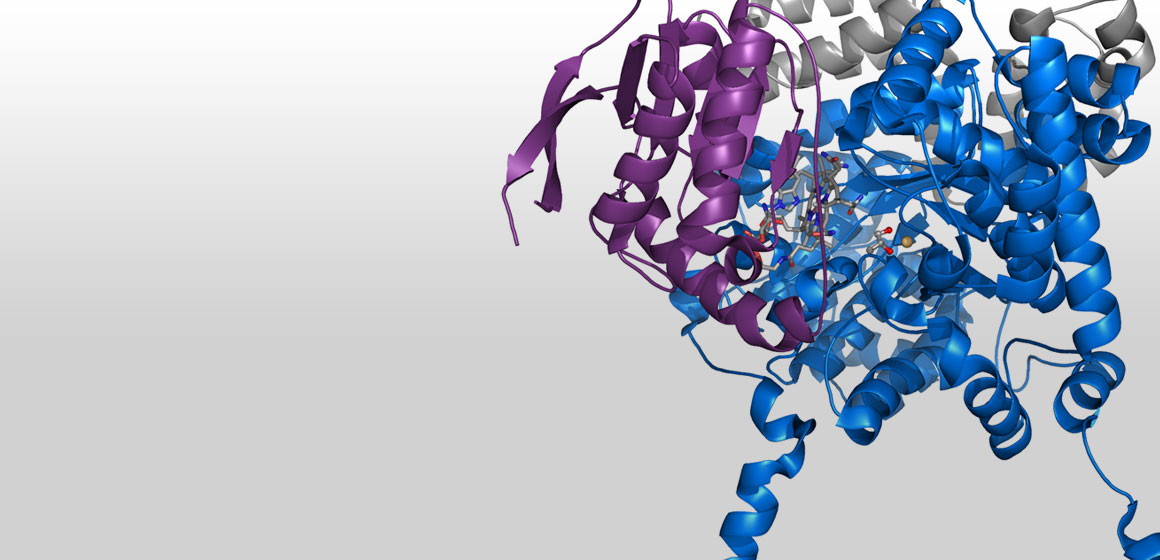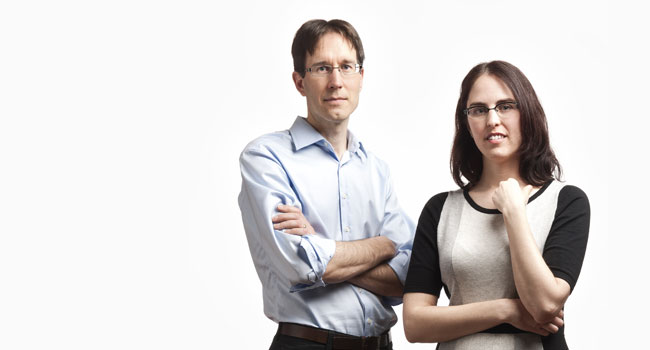 Monday 23 February 2015 12:06pm
Monday 23 February 2015 12:06pmTwo Otago scientists are working on a project that could be a world-changer – a combination of reducing greenhouse gas emissions and cutting back on the use of fossil fuels.
Converting greenhouse gases into high-value chemicals could have major environmental benefits and generate substantial commercial gain. It could also establish New Zealand as the centre of a global market for green chemicals.
The biotechnology at the heart of the project stems from the fundamental research interests of husband and wife team Dr Wayne Patrick and Dr Monica Gerth.
Gerth and Rutherford Discovery Fellow Patrick co-lead the Department of Biochemistry's Laboratory for Enzyme Engineering and Evolution (the E3 Lab), working on gaining insights into the evolution of individual enzyme molecules and the networks in which they function inside all organisms.
They are collaborating with leading biotechnology company LanzaTech, which has a microbe that can grow by using harmful gases from industrial plants such as steel mills and oil refineries.
“All of our work stems from a fundamental question at the intersection of biochemistry and evolutionary biology,”
Gerth and Patrick are engineering enzymes to put into this microbe so it can produce useful raw materials that would otherwise have to be made from petroleum.
The project combines their expertise in directed evolution, microbiology and enzymology.
“All of our work stems from a fundamental question at the intersection of biochemistry and evolutionary biology,” says Patrick. “Where do new enzymes and metabolic pathways come from?
“Even the simplest living cells carry out a bewildering array of complex chemical reactions catalysed by a network of enzymes. While it's straightforward to envisage the evolution of one enzyme, it is vastly more complex to envisage the evolution of the entire network.

Dr Wayne Patrick and Dr Monica Gerth.
”Grappling with this complexity gives us insights for designing proteins that have biomedical and biotechnological applications.”
It's a good example of fundamental research sparking a potentially world-changing application, says Gerth. “We can't always predict where our research might lead – that's a fun part of the job. So fundamental research is a step into the great unknown, but it often has really exciting outcomes that people benefit from.”
Gerth and Patrick never forget their research is funded by the taxpayer. “We were both lucky enough to train in top-notch labs, both here and overseas,” says Patrick. “Now is our chance to give something back.”
Patrick followed a first-class honours biochemistry degree at Otago with a PhD at Cambridge in the UK and postdoctoral research at Emory University in the US. Coming back to New Zealand in 2007, he worked at Massey before returning to Otago.
Gerth gained her chemistry degree from The Evergreen State College in Olympia, Washington (US), before a PhD at Emory. On relocating to New Zealand with Patrick, she was awarded a postdoctoral fellowship from the Foundation for Research, Science and Technology (FRST).
It's a good example of fundamental research sparking a potentially world-changing application.
In 2012 they moved to Otago to set up the E3 Lab, where they both have their own individual projects, but enjoy the synergy that comes from having a shared laboratory. “We're living every science nerd's dream,” says Patrick. “We live together and run a lab together!”
Both scientists have been recognised for their ability to translate fundamental insights into applied outcomes. In 2010 Patrick was named NZBIO's Young Biotechnologist of the Year. He remains the only university-based scientist ever to have won the award.
In 2014, Gerth was runner up in Otago Innovation Limited's Proof of Concept competition, for a new project to engineer antimicrobial enzymes for medical devices.
It's an exciting time in the E3 Lab, says Gerth. “I'm also working on developing protein-based biosensors and starting a new project to fight kauri dieback disease. Wayne has projects ranging from the resurrection of extinct enzymes to engineering better enzymes for genome sequencing technologies.”
“Of course,” adds Patrick, “it's the people in our lab who make it all happen. We're really lucky getting to work with such a great group of students and enthusiastic young scientists. We all learn a lot and we have a huge amount of fun as well.”
This simplified figure depicts the three-dimensional structure of an enzyme (measuring 0.000007mm across) that is being redesigned to convert butanediol to butanone.
Funding
- Ministry of Business, Innovation and Employment Smart Ideas Grant
- Marsden Fund
- Rutherford Discovery Fellowship